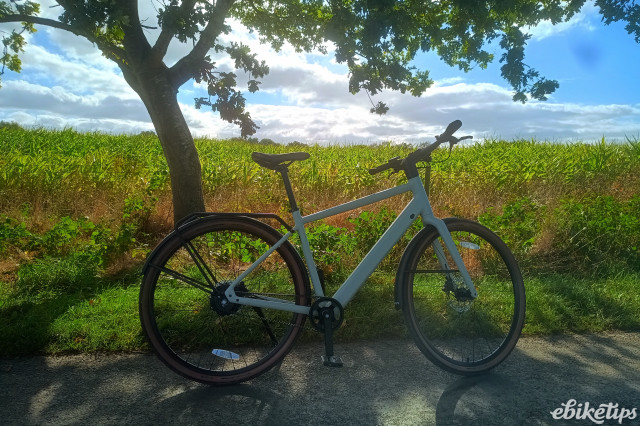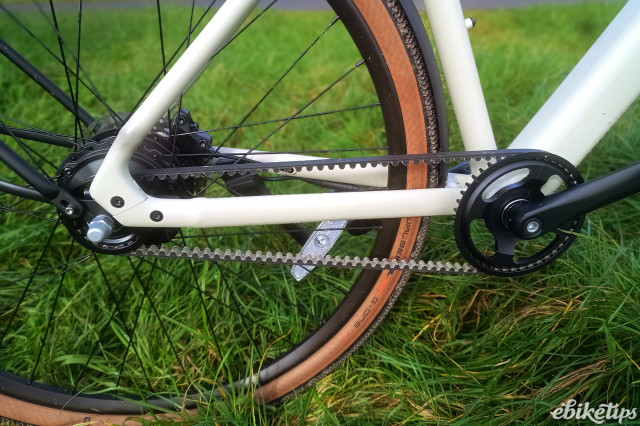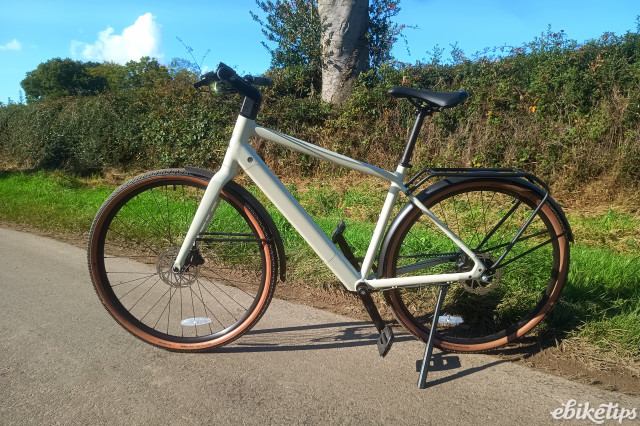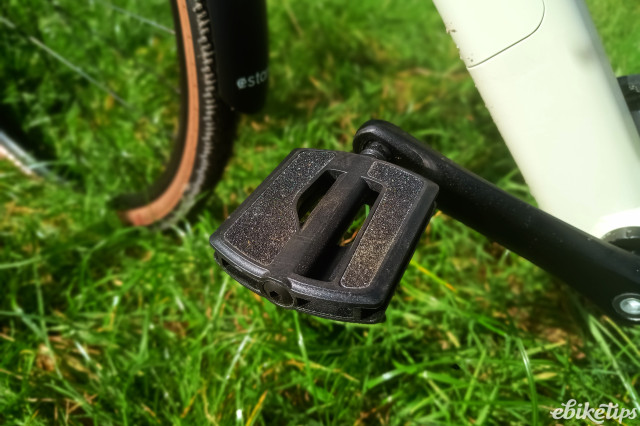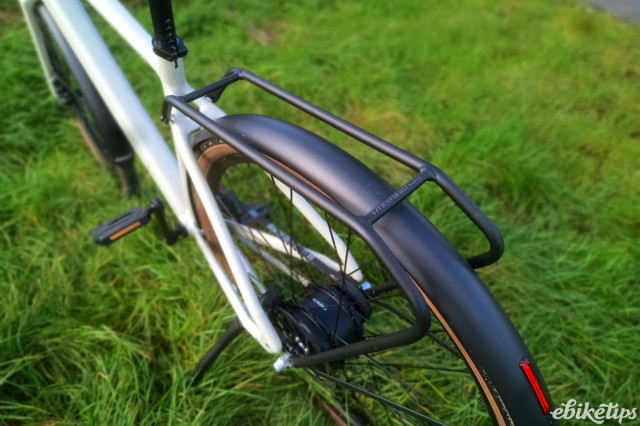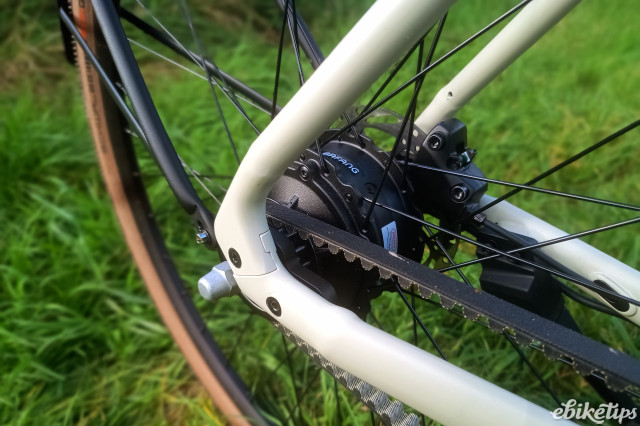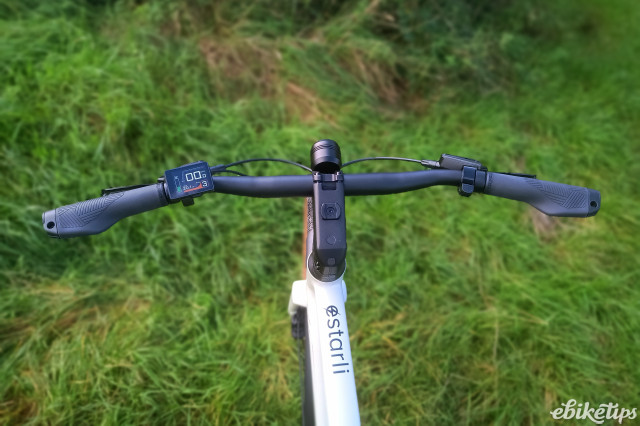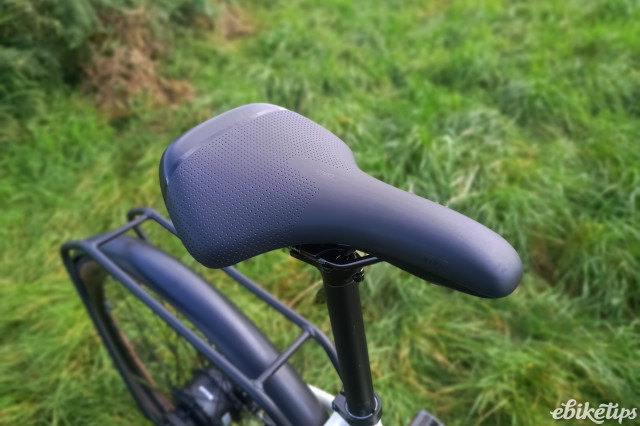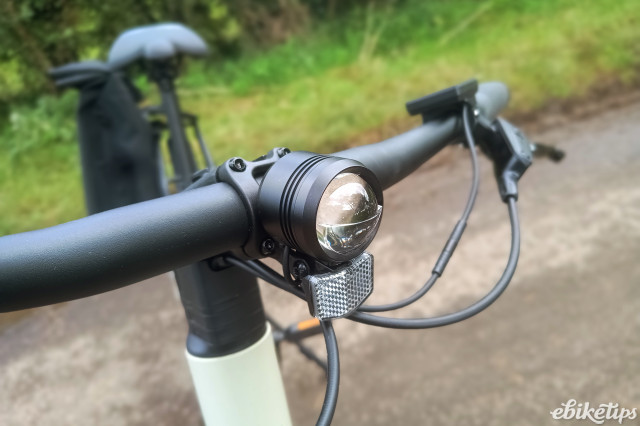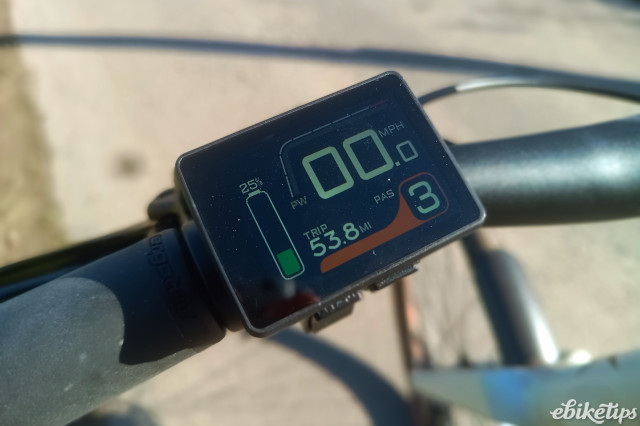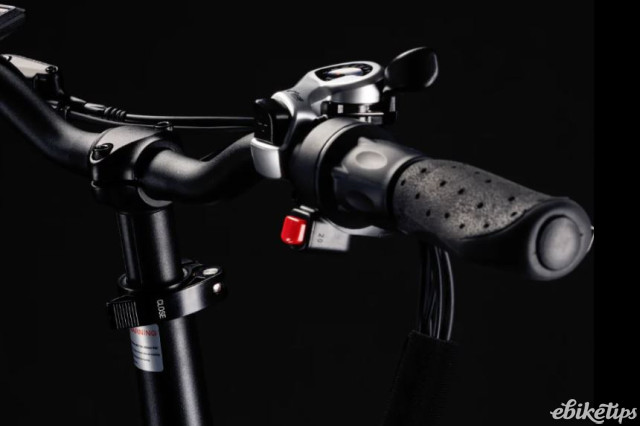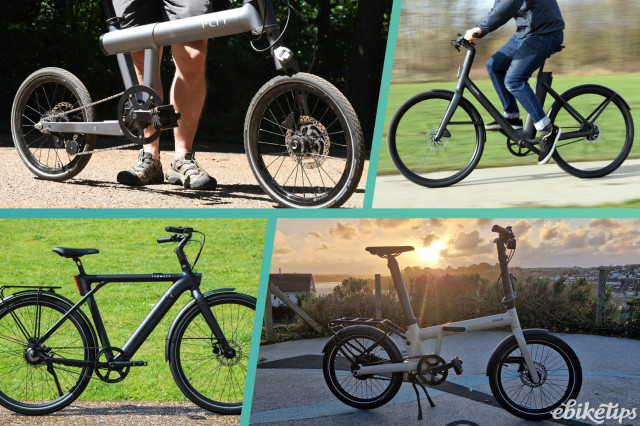Review: Estarli e28.X
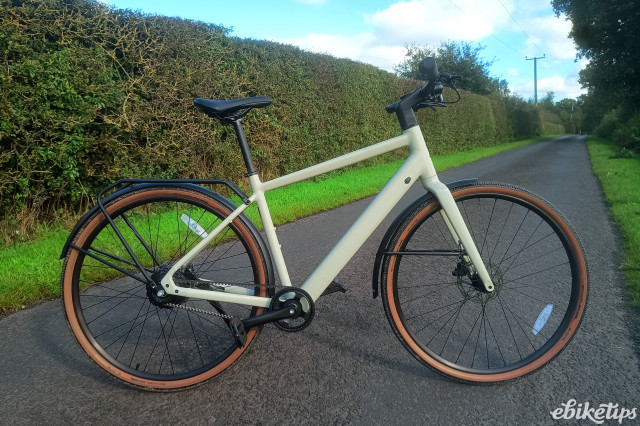
Overview
- Low maintenance belt drive
- Easy to operate
- Meaningful motor assistance even at lower levels
- Lack of control over gear changes
- Can get stuck in larger gear uphill
- Two gears still isn't a lot
In an e-bike world that at times seems to be going out of its way to actively repel technophobes, the sheer get-on-and-ride simplicity of the Estarli e28.X will make it the perfect bike for a lot of people. There are however some significant disclaimers to that statement, which I'll come to in a bit.
I reviewed Estarli’s first e28 in January last year and Ian then had a look at the e28.8 Trapez version a few months later after the brand had moved to a new drive system and made a few other refinements.
This latest incarnation is a rather different beast however, with a belt drive and an automatic two-speed gearbox. It comes with either a crossbar or step-through frame and you can choose from a bunch of optional add-ons. The version tested here has a rear rack, which bumps the price up a little from £1,895 for the base model.
It’s worth pointing out at this point that the eight-speed e28.8 is still available on the Estarli website, along with a new e28.9 model with nine-speed derailleur gears.
The bike
Upon unboxing the e28.X, my first impression was that it was just a fundamentally better quality bike than its forebear.
The original was such excellent value for money that it was easy to excuse a little bit of roughness around the edges. The cables out front were tidied with generic plastic cable ties, for example, while the mudguards were lightweight affairs which I think contributed to some of the low grade generic bike rattle when riding. It may have just been bad luck, but I also had a couple of punctures during the time I had it.
In contrast, there is far less cabling on the e28.X full stop, and the small amount that remains is neatly secured underneath the stem where it enters the head tube. The integrated aluminium mudguards are also way more solid (and come as standard), while the chunky Schwalbe G-One RS tyres should prove more resistant to hawthorn-induced misfortune.
But those are smaller differences really, even if the cumulative effect is significant. The big difference with the e28.X is the use of Bafang’s H700 rear motor with its automatic dual speed system. We may as well get to that right away.
The motor
One of the great strengths of e-bikes is that they can make gearing so much less important. If your bike’s motor’s decent and you live somewhere not too hilly, you’ll probably spend almost all your time in whatever gear works best for you at or near the 15.5mph motor cut-off limit.
Unlike on an unassisted bike, where changes in gradient will greatly influence your speed, e-biking tends to be a lot more one-paced with the motor keeping your speed up when you’re riding up a slope or into a headwind.
Single-speed e-bikes therefore make a lot of sense. Derailleur gears are certainly a lot less hassle than they used to be, but there’s still something to be said for ditching them entirely. You can then also run a belt drive which will last longer than a chain and will require far less maintenance.
The downsides of a single-speed setup are that it’s hard to find a gear that feels right at both low speeds and higher ones (impossible really) and secondly, there is always a chance you might at some point hit a steeper hill.
Bafang’s dual speed system seeks to address these single-speed weaknesses by, um… adding a gear.
Okay, technically we’re no longer talking about a single-speed, but the crucial element here is that the gearing functions within the hub motor. That means no derailleur and you can keep the belt drive, but you now have twice as many gears. Nor does this setup add much complexity from a user perspective because the motor automatically adjusts the gearbox ratio by detecting the speed of the bike.
So how does it work in practice?
Here’s where the picture gets a little muddier. The first thing to note is that while two gears is obviously twice as many as one, it’s still not all that many in the grand scheme of things. That means that the gear shifts are sizeable.
When you set off, the bike will default to the smaller gear, then somewhere around 12.5mph, it will shift up. You will notice this because it’s quite a big jump – not unlike going from the inner chainring to the big one on a road bike. Throw in the fact you don’t actually choose when to change and there can be a bit of a thunk as your leg unexpectedly meets the increased resistance. It’s not too jarring though and you’ll invariably be glad the gear change has happened because otherwise your pedalling would get uncomfortably rapid.
Changing down is mostly far less noticeable, if only because it’ll happen when you’re not pedalling – such as when you’re slowing on the approach to a junction or something like that. The exception is when you hit a hill that significantly slows you because this is the one area where I don’t feel the autoshift system works all that well.
The issue, really, is that as with most bike gear systems, Bafang’s doesn’t change down well under load – it doesn’t even try, in fact. If you hit a hill and maintain constant pressure on the pedals, you’ll remain in the larger of the two gears even if your speed drops below the level that would ordinarily warrant the lower gear.
If you ease off the pedals for a moment, it’ll drop down, but that requires a bit of awareness and forethought. You’re an intelligent sort, dear reader – I know this is no issue for you – but I can imagine it catching a couple of people out given the e28.X is shaped to be a straightforward get-on-and-ride bike where you don’t have to think about gears (or really anything much at all).
The good news is that this frailty doesn’t manifest that often. Estarli’s website suggests the motor can produce up to 45Nm of torque and I found it to be plenty powerful enough to maintain a decent speed on not insignificant gradients. Even on steeper stuff, you’ll often naturally take a beat on a brief flatter section or when shifting in the saddle and may well not realise the bike's changed down until it later changes back up again.
The speed uphill is helped by the weight of the bike. The e28.X is a little burlier than its forebears (19.5kg with the rear rack on, according to the ebiketips scales) but that compares favourably with something like the recently reviewed Tenways CGO009, a similarly equipped single-speed with much the same sized battery, which comes in at 23kg.
The smaller gear is not just for setting off or riding uphill either. It also means that the bigger gear can be that bit larger, which means a comfortable pedalling cadence at a wider range of speeds. You’ll never feel like you’re setting off overgeared, but unlike a single-speed you’ll then be able to pedal quite comfortably up to somewhere around 19mph.
One thing worth emphasising is that you cannot choose which gear you’re using. That means if you are particular about pedalling cadence, or habitually ride just below the threshold where the bike changes up to the bigger gear, you may not get on with this system.
Assistance levels and range
The motor draws its power from a removable 360Wh battery integrated into the down tube. This springs out a centimetre when you turn the key, but then doesn’t fully release until you press a newly-revealed button which prevents gravity-related mishaps. You can charge it on or off the bike.
Estarli reckon it’s good for 60-90km (37 to 56 miles) and, as ever, whether that’s actually viable or not will depend on how and where you ride.
I didn’t run the charge down any lower than 7%. On that occasion, I’d done 52km (32 miles) with 330m (1,080ft) of climbing. I wouldn’t say I’d been particularly sparing with the power though, riding mostly at Level 3 with a fair whack of Level 5 going uphill.
You can definitely spare your battery more. Unlike a lot of e-bikes, Levels 1 and 2 provide meaningful assistance all the way up to the cut-off limit and even at those lower levels I would quite often average 15mph on a ride.
This isn’t always the case because with many e-bikes the assistance limit doubles as a de facto maximum speed – additional human effort above that threshold offering dispiritingly little reward. The e28.X rolls well enough that this phenomenon is a lot less noticeable and I often found myself riding without the benefit of the motor.
Assistance can feel a bit on-and-off if you’re riding near the cut-out point in Level 5, but there’s a pretty obvious solution to that. At lower levels things are a lot smoother and there are no such issues at slower speeds whatever the level of assistance.
The rest
As mentioned already, the mudguards are robust and non-rattly, as was the optional rack. Estarli also lent me one of their rucksack panniers to go with the latter. I don’t have strong feelings on that beyond that it’s a nice, practical add-on – easy to carry and easy to clip on and off the bike.
The Tektro hydraulic disc brakes didn’t at any point feel that they would let me down.
Saddles are always a bit of a personal thing, but I got along with this one. It’s nicely wide towards the rear to suit an upright riding position but without too broad a nose, which I feel can often be an issue.
The grips felt comfy, although I did get a bit of pins and needles in one hand if I rode for more than an hour. I can’t really say for definite it was the grip that caused that because it didn’t feel at all uncomfortable and the other hand was fine. It’s probably just an exciting new physical ailment resulting from a recent crash (on my own bike).
The grips are quite wide so those with smaller hands will most likely find themselves grasping them a little way in so as to more easily reach the controls – although given the automatic gears, you won’t be doing much beyond shunting up and down the assistance levels anyway. The only other thing you might do is double-tap the power button to switch the integrated lights on. The front light’s decent - brighter than many.
The display itself is appropriately straightforward: speed, assistance level and the percentage of the battery remaining are the three centrepieces. You can then toggle through average speed, max speed, trip time, odometer and all the rest. There’s also a visual display of how much assistance the motor is chipping in across the top.
One nice touch is that the assistance section of the display changes colour according to your chosen power level – green for low levels, moving to orange and then red for the higher levels.
The bike’s billed as being suitable for riders from 5ft (1.52m) to 6ft 4in (1.93m), which is a pretty sizeable range. I’m 6ft 1in (1.85m) and it felt spot on. My 5ft 7in (1.70m) partner said she found it perfectly comfortable too. As ever, it’s worth taking a test ride. Estarli have a map of dealers on their website.
Value
In the world of minimalist urban hybrids, the £1,895 Estarli e28.X appears very well priced.
Cowboy’s e-bikes are significantly more expensive, for example. The classic currently costs £2,337, while the Cruiser ST is more expensive still at £2,537.
The Honbike Uni4 is a little quirkier and a tiny bit cheaper (£1,799) with a larger battery. However, it’s also sold out and the brand doesn’t boast anything like the same UK dealer network as Estarli for test rides and backup.
The most relevant comparisons would perhaps be the city bikes from Dutch brand, Tenways. I mentioned the £2,399 CGO009 earlier and there’s also the £1,799 CGO600 Pro.
All of the bikes listed above are single-speeds however and I do feel the dual-speed motor used on the e28.X is a plus. It’s probably not the best choice if you’re likely to be tackling a lot of hills, but it’s reassuring to have the smaller gear to fall back on to get you over the odd one. Its presence also means the larger gear is more appropriate for higher speeds and yet you still get all the ease and simplicity of a bike with a belt drive.
If you can get by with two gears and you’re happy to cede control of them, the Estarli e28.X is a well-thought-out, well-made, easy-to-live-with e-bike at a very good price indeed.
1 comments
This bike deserves more love (and attention) than it is getting. This review is close to my own experience, having bought one recently, but the slight negatives it mentions just haven't felt like an issue to me. Yes, it would be great to be able to select one of the two gears manually but I've not yet been in a situation where I've needed that. The hills on my commute are short but sharp 8-13% bumps and the E28.X doesn't struggle at all, keeping the speed above 13mph on the steepest, without any huge effort from myself, so that lower gear isn't needed - I've never felt "stuck" in that larger gear. For an urban commuter, the two gears are enough, I actually find the lower gear a bit too low. And you just don't need levels 3-5 unless you are one more significant slopes - on all the other e-bikes I've tried, levels 1 and 2 (of 5) are pointless, but not on this bike. It's also the first e-bike I've ridden where I've really not noticed the transition from assisted to unassisted and it happily rolls along at 17mph with modest effort from yourself and easily up to 20-22mph it you put more effort in. £2,000 isn't cheap for a bike but, let's face it, for an e-bike of this quality, right now, it's great value.


























